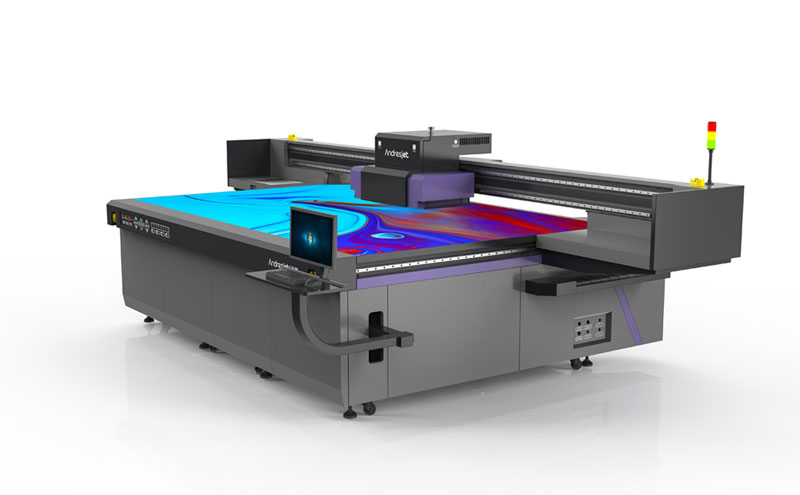UV Flatbed Printer: Understanding the Different Types of Print Modes
UV Flatbed Printer: Understanding the Different Types of Print Modes
UV flatbed printers have revolutionized the printing industry, offering versatility, precision, and efficiency in producing high-quality prints on various materials. These printers utilize ultraviolet (UV) light to cure or dry ink instantly, enabling them to print on a wide range of substrates, including glass, metal, plastic, wood, and more. One of the key aspects that make UV flatbed printers so versatile is their ability to operate in different print modes, each optimized for specific applications and materials. In this article, we will delve into the different types of print modes available in UV flatbed printers, exploring their unique features, advantages, and applications.

1. Single-Pass Printing Mode
Single-pass printing, also known as one-shot printing, is a mode where the printer completes the entire image in a single pass of the print head over the material. This mode is particularly suited for large-format printing and high-volume production. UV flatbed printers equipped with single-pass technology can print at significantly faster speeds compared to traditional multi-pass printers, making them ideal for industrial and commercial applications where time efficiency is crucial.
Advantages:
Speed: Single-pass printing significantly reduces production time, allowing for higher throughput.
Consistency: Since the entire image is printed simultaneously, there is less risk of misalignment or color variations.
Efficiency: Ideal for large-scale production, minimizing downtime and maximizing productivity.
Applications:
Industrial printing, such as for signage, billboards, and vehicle wraps.
Commercial printing for event graphics, retail displays, and point-of-purchase materials.
2. Multi-Pass Printing Mode
Multi-pass printing, as opposed to single-pass, involves the print head making multiple passes over the material to complete the image. Each pass deposits a portion of the ink, gradually building up the layers to achieve the desired color and opacity. This mode offers greater flexibility in terms of ink deposition and is suitable for a broader range of materials and print quality requirements.
Advantages:
Versatility: Can handle a wide variety of materials and thicknesses.
Precision: Allows for finer detail and smoother gradients due to the layered ink deposition.
Ink Efficiency: Uses ink more efficiently, reducing waste and cost.
Applications:
Fine art reproduction and photographic prints.
Printing on delicate or heat-sensitive materials.
Customized promotional items and gifts.
3. Variable Dot Printing Mode
Variable dot printing is a mode that adjusts the size of ink droplets (dots) deposited on the material to achieve different effects and print qualities. This mode is particularly useful for producing prints with varying levels of detail, texture, or transparency. By varying the dot size, printers can create prints with a more dynamic range of colors and tones.
Advantages:
Detail: Enhances the ability to reproduce fine details and textures.
Color Range: Expands the color gamut and tonal range of prints.
Versatility: Suitable for both high-resolution graphics and textured effects.
Applications:
Artistic prints requiring intricate details and varied textures.
Marketing materials with unique visual effects.
Product prototyping and design visualization.
4. White Ink Printing Mode
UV flatbed printers equipped with white ink capabilities offer a unique printing mode that utilizes white ink as a base layer or for specific design elements. White ink printing mode is essential for achieving vibrant colors on transparent or dark materials, as it provides an opaque background that enhances color saturation and contrast.
Advantages:
Color Vibrancy: Enhances color intensity and contrast on dark or transparent materials.
Versatility: Allows printing on a wider range of substrates, including clear plastics and dark fabrics.
Creative Freedom: Enables designers to incorporate white ink effects for unique visual impacts.
Applications:
Printing on glass, acrylic, and other transparent materials.
Producing high-impact graphics on dark-colored substrates.
Creating special effects, such as simulated embossing or debossing.
5. Hybrid Printing Mode
Hybrid printing mode combines different print technologies within a single UV flatbed printer, offering the benefits of multiple print modes in a single operation. For instance, a hybrid printer might combine UV-LED curing with traditional solvent or aqueous inkjet printing. This mode provides the ultimate in flexibility, allowing users to switch between print modes depending on the specific requirements of the job.
Advantages:
Flexibility: Offers the versatility to handle a wide range of materials and applications.
Efficiency: Can complete jobs that would otherwise require multiple printers or processes.
Cost-Effective: Reduces the need for investing in multiple specialized printers.
Applications:
Small businesses and startups requiring versatility without a large investment in multiple printers.
Specialty printing projects that demand a combination of print technologies.
Research and development for innovative print applications.
Conclusion
UV flatbed printers have transformed the printing industry by offering unparalleled versatility, precision, and efficiency. The ability to operate in different print modes further enhances their capabilities, enabling users to tailor their printing processes to specific materials, applications, and quality requirements. From high-speed single-pass printing for industrial applications to the intricate detail achievable through variable dot printing, UV flatbed printers equipped with multiple print modes are poised to continue driving innovation and excellence in the printing industry. As technology continues to advance, we can expect even more sophisticated print modes to emerge, further expanding the creative possibilities and applications of UV flatbed printing.
